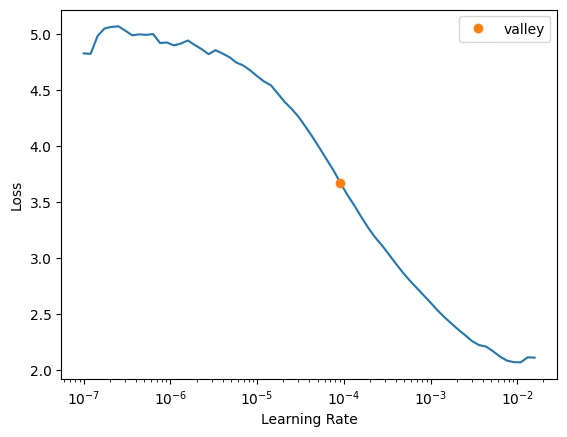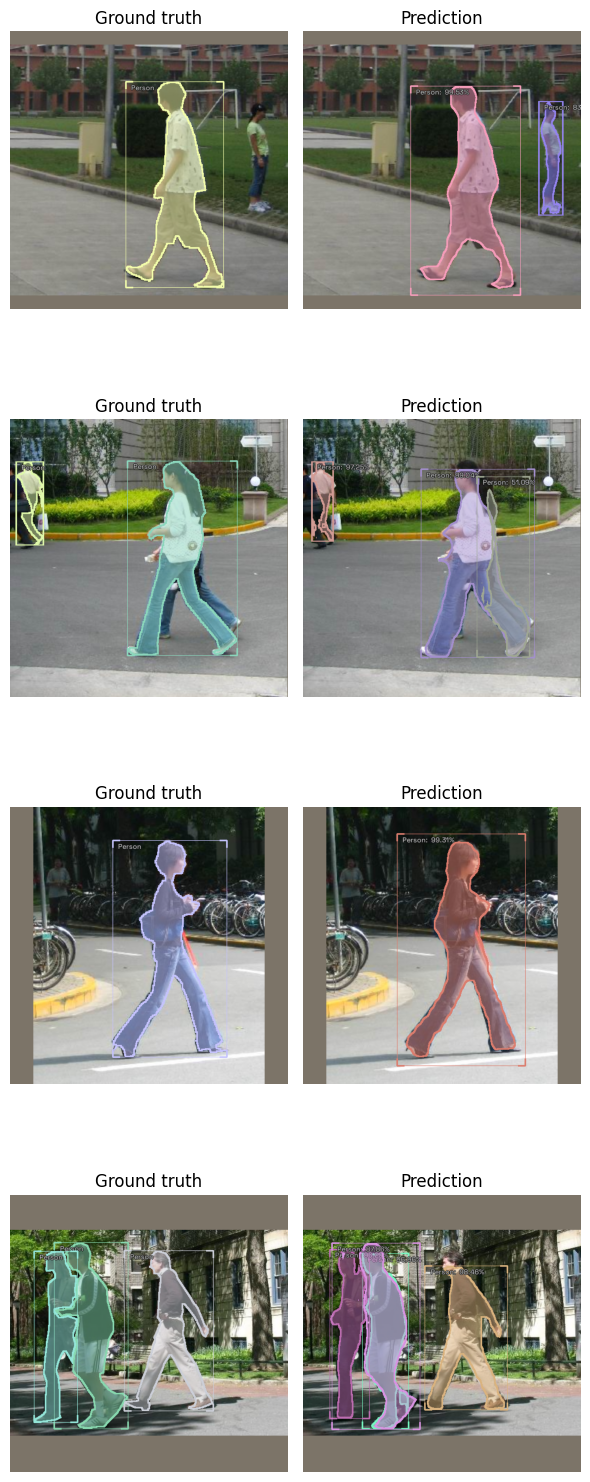Getting Started with Instance Segmentation using IceVision
Introduction
This tutorial walk you through the different steps of training the fridge dataset. the IceVision Framework is an agnostic framework. As an illustration, we will train our model using both the fastai library, and pytorch-lightning libraries.
For more information about how the fridge dataset as well as its corresponding parser check out the pennfudan folder in icedata.
Installing IceVision and IceData
If on Colab run the following cell, else check the installation instructions
Install from pypi...
# IceVision - IceData - MMDetection - YOLO v5 Installation
!wget https://raw.githubusercontent.com/airctic/icevision/master/icevision_install.sh
# Choose your installation target: cuda11 or cuda10 or cpu
!bash icevision_install.sh cuda11
... or from icevision master
# # Torch - Torchvision - IceVision - IceData - MMDetection - YOLOv5 - EfficientDet Installation
# !wget https://raw.githubusercontent.com/airctic/icevision/master/icevision_install.sh
# # Choose your installation target: cuda11 or cuda10 or cpu
# !bash icevision_install.sh cuda11 master
# Restart kernel after installation
import IPython
IPython.Application.instance().kernel.do_shutdown(True)
Imports
from icevision.all import *
[1m[1mINFO [0m[1m[0m - [1mThe mmdet config folder already exists. No need to downloaded it. Path : /home/dnth/.icevision/mmdetection_configs/mmdetection_configs-2.16.0/configs[0m | [36micevision.models.mmdet.download_configs[0m:[36mdownload_mmdet_configs[0m:[36m17[0m
Model
To create a model, we need to:
- Choose one of the models supported by IceVision
- Choose one of the backbones corresponding to a chosen model
- Determine the number of the object classes: This will be done after parsing a dataset. Check out the Parsing Section
Choose a model and backbone
We use MMDet here. When you want to use the torch vision version the COCOMetric will not be correct at the moment due to a problem in the bounding box conversion.
# Just change the value of selection to try another model
selection = 1
if selection == 0:
model_type = models.mmdet.mask_rcnn
backbone = model_type.backbones.resnet50_fpn_1x
if selection == 1:
model_type = models.mmdet.mask_rcnn
backbone = model_type.backbones.mask_rcnn_swin_t_p4_w7_fpn_1x_coco
if selection == 2:
model_type = models.mmdet.yolact
backbone = model_type.backbones.r101_1x8_coco
Datasets : Pennfudan
Fridge Objects dataset is tiny dataset that contains 134 images of 4 classes: - can, - carton, - milk bottle, - water bottle.
IceVision provides very handy methods such as loading a dataset, parsing annotations, and more.
# Loading Data
data_dir = icedata.pennfudan.load_data()
parser = icedata.pennfudan.parser(data_dir)
# train_ds, valid_ds = icedata.pennfudan.dataset(data_dir)
train_rs, valid_rs = parser.parse()
# Transforms
image_size = 512
train_tfms = tfms.A.Adapter([*tfms.A.aug_tfms(size=image_size, presize=1024), tfms.A.Normalize()])
valid_tfms = tfms.A.Adapter([*tfms.A.resize_and_pad(image_size), tfms.A.Normalize()])
train_ds = Dataset(train_rs, train_tfms)
valid_ds = Dataset(valid_rs, valid_tfms)
0%| | 0/170 [00:00<?, ?it/s]
[1m[1mINFO [0m[1m[0m - [1m[34m[1mAutofixing records[0m[1m[34m[0m[1m[0m | [36micevision.parsers.parser[0m:[36mparse[0m:[36m122[0m
0%| | 0/170 [00:00<?, ?it/s]
Displaying the same image with different transforms
Note:
Transforms are applied lazily, meaning they are only applied when we grab (get) an item. This means that, if you have augmentation (random) transforms, each time you get the same item from the dataset you will get a slightly different version of it.
samples = [train_ds[0] for _ in range(3)]
show_samples(samples, ncols=3)

DataLoader
# DataLoaders
train_dl = model_type.train_dl(train_ds, batch_size=4, num_workers=4, shuffle=True)
valid_dl = model_type.valid_dl(valid_ds, batch_size=4, num_workers=4, shuffle=False)
infer_dl = model_type.infer_dl(valid_ds, batch_size=8, shuffle=False)
valid_batch = first(valid_dl)
infer_batch = first(infer_dl)
# show batch
model_type.show_batch(first(valid_dl), ncols=4)

Model
Now that we determined the number of classes (num_classes), we can create our model object.
# TODO: Better flow for train_ds
model = model_type.model(backbone=backbone(pretrained=True), num_classes=icedata.pennfudan.NUM_CLASSES)
Metrics
metrics = [COCOMetric(metric_type=COCOMetricType.mask)]
Training
IceVision is an agnostic framework meaning it can be plugged to other DL framework such as fastai2, and pytorch-lightning.
You could also plug to oth DL framework using your own custom code.
Training using fastai
learn = model_type.fastai.learner(dls=[train_dl, valid_dl], model=model, metrics=metrics)
learn.lr_find()
SuggestedLRs(valley=9.120108734350652e-05)

learn.fine_tune(5, 3e-4, freeze_epochs=2)
| epoch | train_loss | valid_loss | COCOMetric | time |
|---|---|---|---|---|
| 0 | 1.518704 | 0.520843 | 0.610489 | 00:11 |
| 1 | 0.799316 | 0.388823 | 0.689349 | 00:10 |
| epoch | train_loss | valid_loss | COCOMetric | time |
|---|---|---|---|---|
| 0 | 0.373752 | 0.356427 | 0.690000 | 00:11 |
| 1 | 0.362768 | 0.354911 | 0.721681 | 00:11 |
| 2 | 0.345709 | 0.342564 | 0.722313 | 00:11 |
| 3 | 0.327585 | 0.345134 | 0.733165 | 00:11 |
| 4 | 0.324897 | 0.341429 | 0.732759 | 00:11 |
Training using Lightning
class LightModel(model_type.lightning.ModelAdapter):
def configure_optimizers(self):
return Adam(self.parameters(), lr=5e-4)
light_model = LightModel(model, metrics=metrics)
trainer = pl.Trainer(max_epochs=5, gpus=1)
trainer.fit(light_model, train_dl, valid_dl)
Show Results
model_type.show_results(model, valid_ds, detection_threshold=.5)

Inference
Predicting a batch of images
Instead of predicting a whole list of images at one, we can process small batches at the time: This option is more memory efficient.
NOTE: For a more detailed look at inference check out the inference tutorial
batch, records = first(valid_dl)
infer_dl = model_type.infer_dl(valid_ds, batch_size=4, shuffle=False)
preds = model_type.predict_from_dl(model, infer_dl, keep_images=True)
show_preds(preds=preds[:4], ncols=3)
0%| | 0/9 [00:00<?, ?it/s]

Happy Learning!
If you need any assistance, feel free to join our forum.